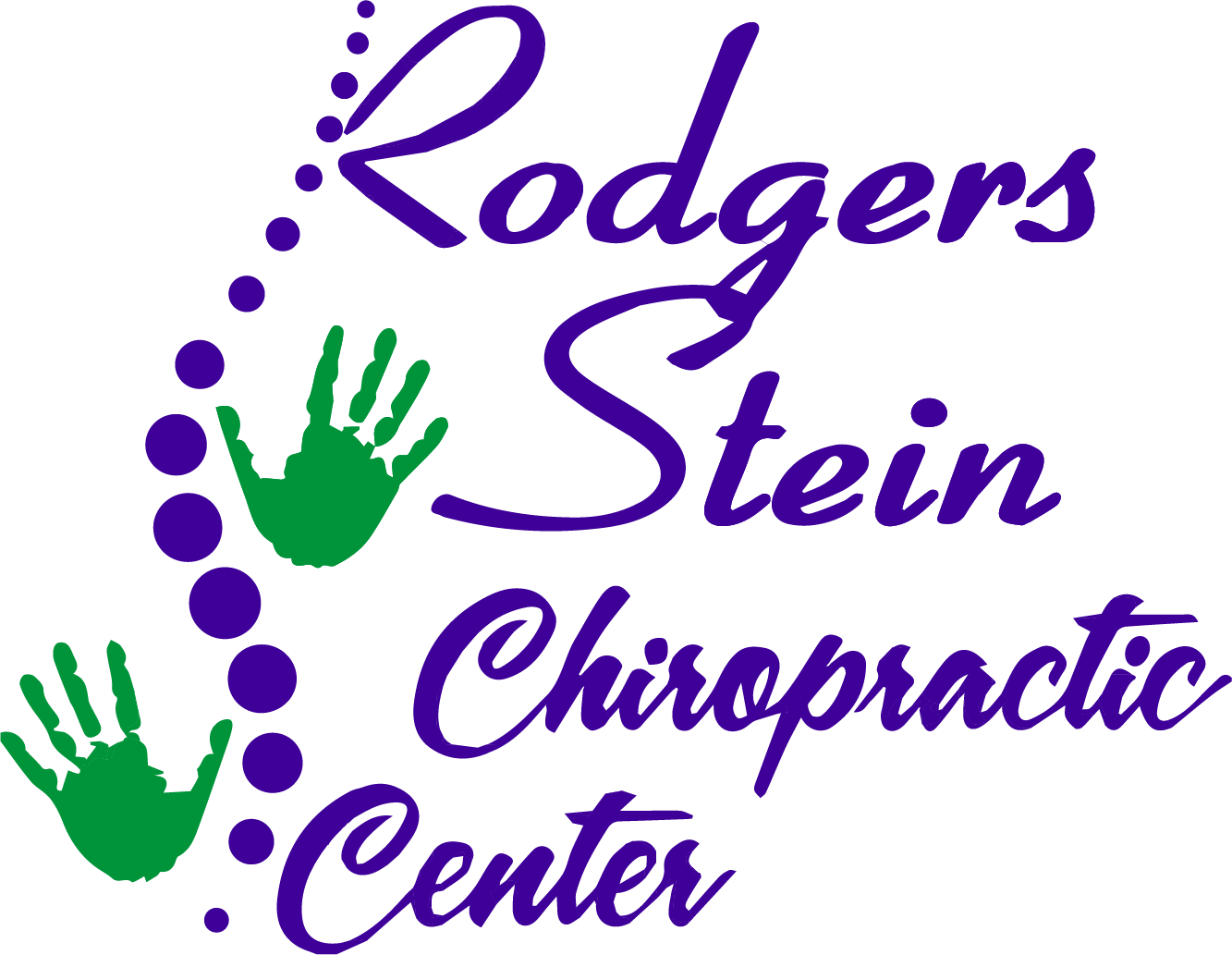You've probably experienced the debilitating effects of chronic migraines, feeling trapped in a cycle of pain and frustration. You might relate to the endless search for answers and relief, only to be met with disappointment. What if you discovered that a few simple lifestyle changes and medical insights could transform your experience? It's not just about medication; it involves understanding your body and its triggers. As you explore this journey, you'll find that the path to relief isn't as straightforward as it seems, but the results can be life-changing. What's the first step you'd take?
Understanding Chronic Migraines
Chronic migraines aren't just bad headaches; they're debilitating episodes that can considerably disrupt your daily life. You might experience severe pain, often accompanied by nausea, sensitivity to light, and sound. These attacks can last anywhere from a few hours to several days, leaving you feeling drained and unable to focus on anything else. Understanding what triggers these migraines is essential for managing them effectively.
Many factors can contribute to the onset of a chronic migraine. Stress is a common trigger, and you may find that your body reacts to anxiety or tension with a migraine attack. Hormonal changes, especially in women, can also play a significant role, as fluctuations can lead to increased migraine activity. Additionally, certain foods, beverages, and even environmental factors like weather changes can set off an episode.
You might notice patterns in your migraine occurrences by keeping a detailed diary. By tracking when they happen, what you ate, your stress levels, and your sleep patterns, you may identify specific triggers that you can avoid.
It's also important to recognize that chronic migraines can affect your emotional well-being. Living in fear of an impending attack can lead to anxiety and depression, further complicating your situation.
Educating yourself about chronic migraines empowers you to take control. By understanding the intricacies of your condition, you'll be better equipped to communicate with healthcare providers and seek appropriate treatments that work for you.
My Initial Struggles
When you first start managing chronic migraines, the daily pain can feel overwhelming.
Identifying your triggers becomes a frustrating puzzle, and each headache takes an emotional toll that's hard to shake off.
It's a challenging journey, but understanding these struggles is the first step toward finding relief.
Daily Pain Management Challenges
For years, managing daily pain felt like an uphill battle. You woke up each morning dreading the possibility of a migraine. Every movement, sound, and light threatened to trigger another episode.
You tried to maintain a semblance of normalcy, but the constant discomfort made it seem impossible. Simple tasks like going to work or spending time with friends became monumental challenges.
You experimented with various medications, hoping to find something that worked. Each trial felt like a gamble, and the side effects often left you feeling worse than the pain itself.
You'd to confront feelings of isolation, as friends and family struggled to understand the relentless nature of your condition. Even your most cherished activities became fraught with fear and uncertainty.
You learned to navigate life with a constant shadow hanging over you. Each day presented new obstacles, making it hard to stay positive. You questioned if you'd ever find relief.
But deep down, you knew you'd to keep searching for a solution. The journey was exhausting, but you were determined to reclaim your life, one small step at a time.
Triggers and Their Impact
Identifying triggers felt like trying to solve a puzzle with missing pieces, as each migraine episode seemed to be set off by something different. One day it could be a change in weather, while the next, it might be a specific food or stress.
You'd find yourself constantly on high alert, analyzing everything you ate, drank, or experienced in hopes of pinpointing the culprit. You might've tried keeping a diary, tracking your migraines alongside your daily activities, hoping to find patterns.
But the more you searched for answers, the more elusive they seemed. You'd often wonder if it was a combination of factors rather than a single trigger, making it even more frustrating. Certain common triggers, like bright lights or loud noises, were easy to identify, yet others, like hormonal fluctuations or dehydration, slipped under the radar.
Each time you thought you'd it figured out, a new migraine would strike, leaving you feeling defeated. The unpredictability kept you in a state of anxiety, as you became increasingly aware that even the slightest change in your environment could send you spiraling into pain.
Understanding these triggers was just the first step in your journey toward relief.
Emotional Toll of Migraines
The constant battle with migraines doesn't just take a physical toll; it weighs heavily on your emotions too. You may find yourself feeling isolated, frustrated, and even hopeless. Each migraine attack robs you of precious moments—time spent with loved ones, pursuing hobbies, or simply enjoying life.
It's not just the pain; it's the lingering fear of when the next episode will strike, making you anxious and on edge. Initially, you might struggle to express this emotional burden. Friends and family may not fully grasp what you're experiencing, leading to feelings of loneliness.
You may even start to question your own worth, believing that your migraines define you. The frustration can build up, leading to anger, sadness, or even depression. You might feel like you're missing out on life, and it's tough to shake off that feeling.
This emotional toll can be just as debilitating as the physical symptoms, leaving you in a cycle of despair. Recognizing this emotional impact is essential. Acknowledging it can be the first step toward healing and finding effective coping strategies.
Exploring Treatment Options
When it comes to managing chronic migraines, you've got a variety of treatment options at your fingertips.
From medication approaches to alternative therapies and lifestyle modifications, finding the right combination can make a huge difference.
Let's explore these avenues to discover what might work best for you.
Medication Approaches
Many people suffering from chronic migraines often seek effective medication approaches to find relief. With a plethora of options available, it can be overwhelming to choose the right one.
Here are some common medication strategies you might consider:
- Abortive Medications: These are taken during a migraine attack to alleviate pain quickly.
- Preventive Medications: Daily medications that can reduce the frequency and severity of migraines over time.
- Triptans: A class of drugs specifically designed to treat migraines by constricting blood vessels in the brain.
- Over-the-Counter Pain Relievers: Non-prescription options like ibuprofen or acetaminophen can sometimes help during mild attacks.
- CGRP Inhibitors: A newer class of medications that target the protein involved in migraine attacks.
Before starting any medication, consult your healthcare provider to discuss the best approach for your specific situation. They can help you weigh the benefits against potential side effects.
It might take time to find the right combination, but with patience and persistence, you can discover a medication strategy that brings you the relief you've been seeking.
Alternative Therapies
Exploring alternative therapies can be a game-changer for those battling chronic migraines. Many people find that these options can complement traditional treatments or even serve as effective standalones.
You might consider acupuncture, which involves inserting thin needles into specific points on your body. This practice is believed to help alleviate pain and reduce the frequency of migraine attacks.
Another option is chiropractic care. Adjustments may relieve tension in your neck and spine, potentially easing migraine symptoms.
You could also explore biofeedback, a technique that teaches you how to control physiological functions such as muscle tension and heart rate, helping you manage pain more effectively.
Herbal supplements like feverfew or butterbur have gained popularity as natural treatments. However, it's crucial to consult with a healthcare professional before starting any new supplement, as interactions with other medications can occur.
Lastly, some people find relief through mindfulness practices like yoga or meditation. These can help reduce stress, a common migraine trigger.
Lifestyle Modifications
Incorporating lifestyle modifications can considerably impact your migraine management. By making intentional changes in your daily routine, you can reduce the frequency and severity of your migraines.
Start by paying attention to your triggers and adjusting your habits accordingly. Here are some effective lifestyle modifications to contemplate:
- Stay Hydrated: Drink plenty of water throughout the day to prevent dehydration, a common migraine trigger.
- Maintain a Consistent Sleep Schedule: Aim for 7-9 hours of sleep each night and try to go to bed and wake up at the same time daily.
- Eat Regularly: Have balanced meals at consistent times to avoid blood sugar fluctuations, which can lead to migraines.
- Manage Stress: Incorporate stress-relief techniques like yoga, meditation, or deep breathing exercises into your routine.
- Limit Caffeine and Alcohol: Both substances can trigger migraines in some individuals, so monitor your intake and adjust as needed.
Implementing these changes can help you create a healthier lifestyle, making it easier to manage your chronic migraines and improve your overall well-being.
Lifestyle Changes That Helped
Finding relief from chronic migraines often hinges on the lifestyle changes you make. One of the first adjustments you should consider is establishing a consistent sleep schedule. Aim to go to bed and wake up at the same time every day, even on weekends. This helps regulate your body's internal clock, reducing the likelihood of triggering a migraine.
Incorporating regular physical activity into your routine can also be beneficial. Engage in exercises you enjoy, whether it's walking, swimming, or yoga. Aim for at least 30 minutes of moderate exercise most days. Not only does this help reduce stress, but it also promotes better overall health, which might lessen the frequency of your migraines.
Managing stress is essential as well. Try techniques like meditation, deep breathing exercises, or mindfulness. These practices can help you stay calm during stressful moments, potentially averting a migraine before it starts.
You should also be mindful of your environment. Create a calming space at home by minimizing noise and bright lights. Consider using blackout curtains and white noise machines to create a peaceful atmosphere, especially when you need rest.
Lastly, be aware of your screen time. Prolonged exposure to screens can contribute to eye strain and headaches, so take regular breaks. Implementing the 20-20-20 rule—looking at something 20 feet away for 20 seconds every 20 minutes—can help reduce discomfort.
The Role of Nutrition
When managing chronic migraines, what you eat can make a big difference.
You'll want to identify trigger foods that could be contributing to your pain and explore beneficial nutrient sources that support your overall health.
Understanding the role of nutrition is key to finding lasting relief.
Trigger Foods to Avoid
Identifying trigger foods is essential for managing chronic migraines effectively. By understanding what you're consuming, you can take proactive steps to reduce your migraine frequency and severity.
Everyone's triggers can be different, but several foods are commonly known to provoke migraines. It's helpful to keep a food diary to track what you eat and how it affects you.
Here are some common trigger foods you might want to avoid:
- Aged cheeses: These often contain tyramine, which can trigger migraines.
- Processed meats: Items like hot dogs and deli meats may contain preservatives like nitrates.
- Alcohol: Red wine and certain beers are frequent culprits.
- Caffeinated beverages: While caffeine can help some, it can trigger headaches in others, especially in excess.
- Chocolate: This favorite treat can be a trigger for many migraine sufferers.
Beneficial Nutrient Sources
While steering clear of migraine trigger foods is important, incorporating beneficial nutrients into your diet can also play a significant role in managing chronic migraines.
Focus on foods rich in magnesium, as studies suggest this mineral helps reduce the frequency of migraines. You'll find magnesium in leafy greens, nuts, seeds, and whole grains.
Omega-3 fatty acids are another nutrient to contemplate. These healthy fats, found in fish like salmon, as well as in flaxseeds and walnuts, possess anti-inflammatory properties that may help alleviate migraine symptoms.
Don't overlook the power of hydration, either. Dehydration can trigger migraines, so drinking plenty of water throughout the day is essential.
Additionally, consider adding riboflavin (vitamin B2) to your routine. Found in dairy products, eggs, and green vegetables, riboflavin has been linked to a decrease in migraine frequency for some individuals.
Lastly, antioxidants from fruits and vegetables, such as berries, citrus, and bell peppers, can help combat oxidative stress, which may contribute to migraines.
Mindfulness and Stress Management
Finding calm amidst the chaos of chronic migraines can be a transformative experience. When you incorporate mindfulness and stress management techniques into your daily routine, you can greatly reduce the frequency and intensity of your headaches.
These strategies help you regain control over your mind and body, creating a strong foundation for overall well-being.
Here are some effective mindfulness and stress management techniques you can try:
- Deep Breathing: Take a few minutes each day to focus on your breath. Inhale deeply through your nose, hold for a moment, and exhale slowly through your mouth. This simple practice can help calm your nervous system.
- Meditation: Spend at least 10 minutes daily in quiet reflection. Use guided meditation apps or simply focus on your breath to foster a sense of peace.
- Progressive Muscle Relaxation: Tense and relax different muscle groups in your body. This method promotes relaxation and can help alleviate tension that may trigger migraines.
- Mindful Walking: Go for a walk, paying close attention to your surroundings. Feel the ground beneath your feet, notice the sounds around you, and immerse yourself in the present moment.
- Gratitude Journaling: Write down three things you're grateful for each day. Shifting your focus to positive aspects of life can lower stress levels and improve your mood.
Finding the Right Doctor
Choosing the right doctor can greatly impact your journey toward managing chronic migraines. You need a healthcare professional who understands your specific needs and the complexities of migraine disorders. Start by seeking a neurologist who specializes in headaches. Their expertise will provide you with the best chance of finding effective treatments.
When you begin your search, consider asking for referrals from friends, family, or your primary care physician. Online reviews can also offer insights into a doctor's approach and patient satisfaction. Once you have a shortlist, check if they're board-certified in headache medicine. This certification indicates that they're knowledgeable about the latest treatments and therapies.
During your initial consultations, pay attention to how they listen to you. A good doctor should take your history seriously, ask detailed questions, and encourage you to share your symptoms openly. Trust your instincts; if you feel comfortable and understood, that's a good sign.
Don't hesitate to ask about their treatment philosophy. Some doctors may focus on lifestyle changes and holistic approaches, while others might prioritize medication. You want someone whose approach aligns with your own values.
Lastly, consider logistics. Check if their office is conveniently located and if their hours accommodate your schedule. Insurance coverage is another significant factor. It's important to find a doctor whose services are covered, so you won't face unexpected costs.
Finding the right doctor is a vital step toward reclaiming your life from chronic migraines.
Medication and Pain Relief
Steering through the world of medication for chronic migraines can feel overwhelming, but understanding your options is essential for effective pain relief.
You've likely encountered a range of treatments, from over-the-counter pain relievers to prescription medications tailored specifically for migraines. It's important to recognize that what works for one person may not work for another, so you might need to experiment under your doctor's guidance.
Here are some common categories of medications you can consider:
- Abortive medications: These are taken at the onset of a migraine to alleviate pain, such as triptans or NSAIDs.
- Preventive treatments: These are taken daily to reduce the frequency and intensity of migraines, including beta-blockers or antidepressants.
- CGRP inhibitors: A newer class of medications that target specific pathways involved in migraine attacks.
- Botox injections: Approved for chronic migraine sufferers, these can help reduce the number of headaches you experience.
- Lifestyle medications: Sometimes, medications for other conditions can also help manage migraine symptoms, such as certain seizure medications.
It's essential to maintain open communication with your healthcare provider.
Discuss any side effects or concerns you might have, and don't hesitate to ask about alternative options if your current regimen isn't effective.
Tracking Triggers and Patterns
Understanding your migraine triggers is essential for managing chronic headaches effectively. By tracking triggers and patterns, you can gain valuable insights into what sparks your migraines and take proactive steps to minimize their occurrence.
Start by maintaining a migraine diary. Each time you experience a headache, jot down the date, time, duration, and severity of the pain. Include any activities you were engaged in, meals you ate, and the environment around you, like weather conditions or stress levels.
As you build a detailed record, you'll likely notice recurring factors that precede your migraines. It might be specific foods, hormonal changes, lack of sleep, or even strong scents. Identifying these patterns can empower you to make informed lifestyle changes. For instance, if you realize that certain foods consistently trigger your migraines, you can choose to eliminate them from your diet.
Don't forget to account for emotional triggers too. Stress, anxiety, and even excitement can lead to migraines for some people. Consider incorporating relaxation techniques into your routine, such as mindfulness or deep-breathing exercises, to help manage these triggers.
Once you've tracked your triggers, discuss your findings with your healthcare provider. They can help you interpret your data and suggest personalized strategies for prevention.
Embracing a New Normal
After months of tracking your triggers and patterns, you might find yourself at a crossroads: learning to embrace a new normal. It's a significant shift, especially when you've spent so long maneuvering through the unpredictability of chronic migraines.
Accepting this new reality doesn't mean giving up; it's about adjusting your mindset and lifestyle to find what truly helps you thrive.
Embracing a new normal involves recognizing that your life may look different now, but that doesn't have to be a negative thing. Here are some ways to manage this change:
- Prioritize self-care: Make time for relaxation, meditation, or gentle activities that soothe your mind and body.
- Stay flexible: Be open to changing plans or routines. It's okay to say no if you're not feeling up to something.
- Communicate openly: Share your experiences with friends and family, so they understand your needs and limitations.
- Set realistic goals: Focus on what you can achieve each day, no matter how small. Celebrate those wins.
- Seek support: Connect with others who understand your journey. Online forums or local support groups can be invaluable.
This new normal isn't about defeat; it's about empowerment. By adapting and focusing on what you can control, you'll discover new strengths and ways to enjoy life, even amidst the challenges of chronic migraines.
Conclusion
Finding relief from chronic migraines is possible, and you don't have to go through it alone. By understanding your triggers, exploring treatment options, and making lifestyle changes, you can greatly improve your quality of life. Don't hesitate to seek help from healthcare professionals and try different strategies until you find what works for you. Embrace the journey toward wellness, and remember that every small step you take can lead to a brighter, migraine-free future.



